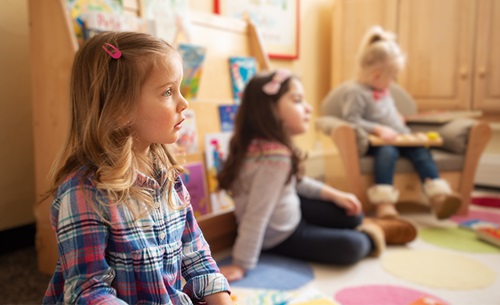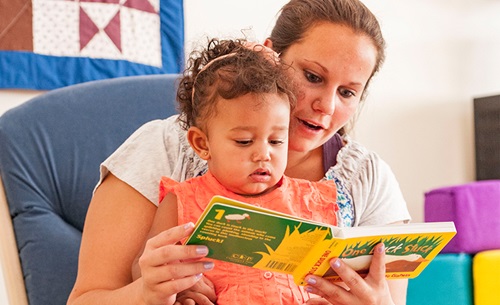Risk
The Role of the Teacher
|
August 2013
Remember the powerful feeling of being at the top of a tree, the exhilaration of rolling down a hill, or the sense of accomplishment from turning the earth using a real shovel? The natural world offers children open space with grass, hills, sky and trees that call out to their innate quest for action, adventure and competence using their bodies. Children deserve and benefit from these experiences, yet because much of what goes on outdoors involves risk, we are limiting these opportunities in children’s lives.
Keeping children safe is paramount. It is equally imperative for children to have opportunities to take up the adventures the natural world offers. The following suggestions can help you negotiate risks with the goal of providing rewarding, yet safe challenges that are vital for enhancing children’s confidence, physical skills and joy.
Know your disposition toward risk
We all have different reactions to challenging situations and what we perceive as too risky. Examine your view of outdoor activities to notice how your personal feelings may hinder children’s strong desire for adventures in nature.
Observe for children’s capabilities.
Often we stop children from negotiating a new challenge without taking into account their competence. Children usually pursue challenges within their abilities. Marvel at children’s unwavering determination and know-how while staying close to intervene if necessary.
Practice risk management.
A risk is possible to negotiate and appropriate for particular situations and children. A hazard is inherently dangerous. Make distinctions between risks-- common childhood accidents that cause bumps, skinned knees and scratches--and hazards that result in serious injuries.
Create an environment for safe challenges.
We can go too far in stripping the outdoors of any challenge that children have nothing interesting to do, making injuries more likely to occur. Engaging children by carefully planning for the outdoors helps focus their eagerness for exploration, which results in fewer falls and scuffles.
Remember, you are there.
When our concern for safety leads to eliminating anything challenging for children, we diminish the role of the teacher. When teachers take a less active role in thinking through safety issues, children are more at risk. Children are not alone outdoors. We are there, too! It is our job to supervise children’s safety and equally essential to provide for their curious minds and active bodies.
Provide challenging alternatives.
When children are involved in risky situations rather than just stopping them, offer safe alternatives while preserving opportunities for feeling powerful and developing physical skills.
With attention and ongoing negotiation, we can ensure that children grow up developing skills and confidence, and feel joy and exhilaration, while still being protected and supported. What’s the risk if children don’t have the opportunity for these vital experiences outdoors?






